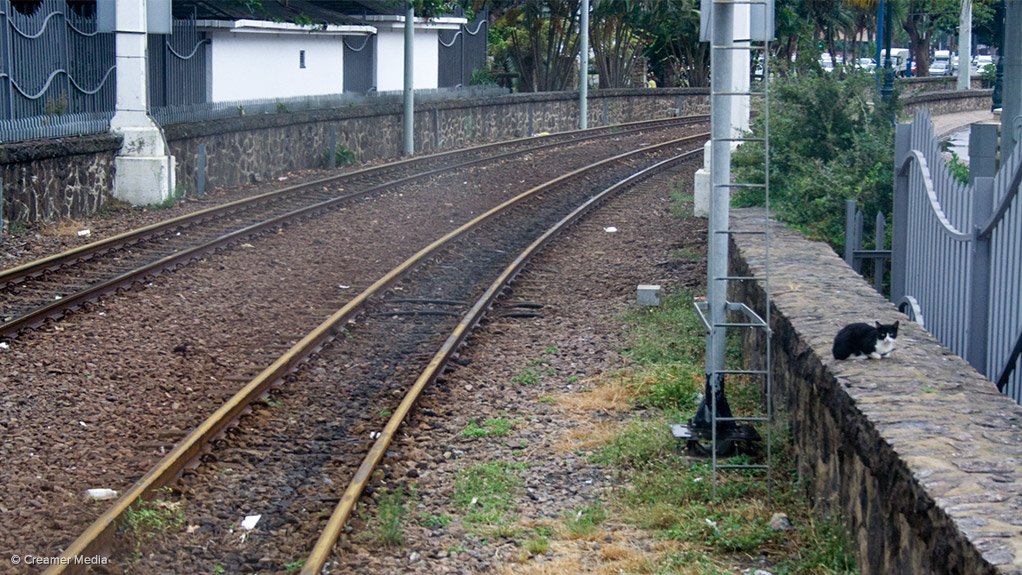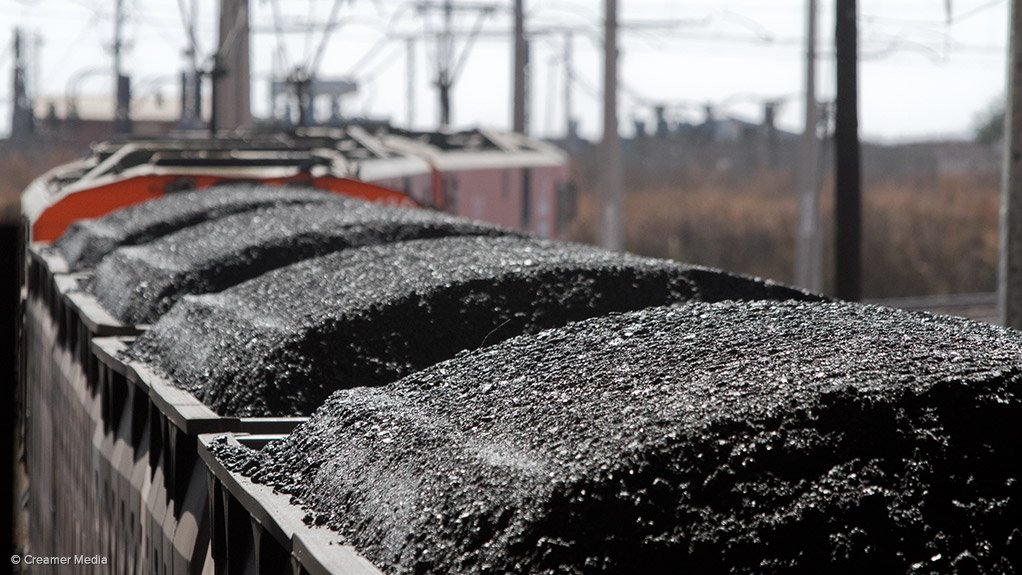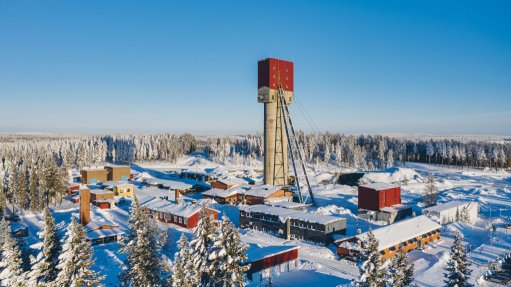SA can become a bigger coal exporter



RAIL CAPACITY Transnet is considering upgrades to its various rail tracks leading to the Richards Bay Coal Terminal
FROM MINE TO PORT Transporting coal from South Africa's coal mines to the country's ports remains a challenge
Photo by Duane Daws
South Africa has the potential to export more coal, provided there is rail infrastructure expansion and improvement in the country, says geology, mining and environmental consulting services provider MSA principal coal consultant Philip Mostert.
He notes that South Africa currently only exports 74-million tons a year of coal from ports, such as the Richards Bay Coal Terminal (RBCT), in KwaZulu-Natal, even though export capacity exceeds 90-million tons a year.
It remains a challenge to transport the coal from South Africa’s coal mines, the majority of which are situated inland, to the ports.
“Rail construction, along with sufficient rolling stock, is the first major obstacle the South African coal industry has to overcome. We have the coal, but the challenge is getting it out of South Africa.
“The country’s ports have sufficient capacity . . . but the rail capacity to transport it to the ports still needs work,” Mostert tells Mining Weekly, adding that there was an upward trend in recent years in South Africa’s rail capacity.
Improving Export Capacity
State-owned logistics company Transnet Freight Rail (TFR), a division of Transnet, announced a R300-billion rail and port capacity-increase programme in 2011, but progress has been slow, says Mostert.
He says that Transnet announced in 2012 that it was planning to build its own export port, with a capacity of about 15-million tons a year, to complement the RBCT, but subsequently put that plan on hold after reaching agreement with coal major BHP Billiton to allocate additional export capacity to emerging black-owned coal mines.
However, Transnet is also in talks with Swaziland and Mozambique to increase rail capacity from South Africa through Swaziland into Maputo, the capital of Mozambique, to use the city’s export capacity and free up capacity on the RBCT line, he notes.
To date, this programme mostly entailed the procurement of new locomotives and new, bigger wagons, Mostert says, adding that, as a result of the programme, TFR currently operates 200 wagon train sets going to the RBCT.
“. . . previously, TFR was managing 8 000 t on a single trip [to the RBCT]; now, it is managing close to 16 000 t on one trip. This makes a big difference in terms of how much coal you can get out.”
Further, he says Transnet is contemplating the upgrading of rail infrastructure from the Waterberg coalfields, in Limpopo, to the RBCT this year.
The coal line currently has capacity of about five-million tons a year, and Transnet recently signed a memorandum of understanding with diversified resources company Exxaro to increase the rail capacity initially to about 30-million tons a year, with the option to extend it later to 60-million tons a year, Mostert explains.
However, the impact of this development might only be realised in 2018/19.
“All this should open up the Waterberg to an enormous degree – there is significant coal resources there and huge potential. This rail infrastructure needs to be . . . ready, as this will be beneficial for the country’s coal mining industry,” Mostert states.
Challenges
Mostert tells Mining Weekly that, in addition to the issue of rail infrastructure upgrades, South Africa’s coal exporting ability is also affected by the debate regarding the eventual signing of the Mineral and Petroleum Resources Development Act (MPRDA) Amendment Bill.
He says the MPRDA Amendment Bill is expected to be signed into law towards the end of the year, which could result in coal being declared a strategic resource.
“. . . this is likely . . . to force export companies to allocate a certain portion of their production to the domestic market, which essentially means allocating it to State-owned power utility Eskom. The problem with that is that the amount of coal available for export will be reduced.”
MSA MD Keith Scott says the uncertainty regarding the proposed final amendments to the MPRDA and of working without clear guidance from legislation make investors nervous.
“Until we have clarity on what the implications of the MPRDA Amendment Bill are going to be, investors developing coal mines will become more cautious. As a result, capital will be constrained, which is probably the number one risk in the mining industry currently.”
In addition, Scott notes that South African coal exports barely increased between 2002 and 2012 when there was a mining boom, while, at the same time, exports from other regions grew dramatically as other countries took advantage of the highest prices the industry had ever enjoyed.
“It is unlikely that we will see another mining bull market such as the one the industry enjoyed up until 2012, however, South Africa must still position itself to be able to export more coal cost effectively going forward,” says Scott.
Mostert says another issue that affects South Africa’s coal industry is climate change, with international pressure to find solutions to limit emissions from coal-fired operations increasing every year.
“If an emission-reduction agreement does get signed at the twenty-first Conference of the Parties (COP21), under the United Nations Framework Convention on Climate Change this year, it will have a massive impact on the level of coal consumption by countries such as China and India.”
France will host COP21 from November 30 to December 11. The conference will aim to achieve a new international agreement on managing climate change, applicable to all countries, with a further aim to keep global warming below 2 ºC.
Clean Coal Technologies
Mostert says Eskom is the leader in terms of implementing clean coal technologies, with its new power stations to use flue gas desulphurisation (FGD) units to remove the sulphur emissions from burning coal.
He adds that Eskom plans to also equip some of its old power stations with the FGD units.
Furthermore, all the new stations, and a large number of the old ones, have fabric filter plants that manage the dust emissions, Mostert notes.
Eskom is also taking the lead in underground coal gasification.
“The advantage with this is that you leave the vast majority of carbon dioxide and all the ash in the earth,” states Mostert.
He adds that much work has also been done in terms of technology that can be used in coal beneficiation, as the old technology used dense-media separation that required significant amounts of water.
Therefore, the drive in recent years has been to encourage companies to incorporate dry technologies into their operations, which Mostert says “will have a significant positive impact, especially in a water-scarce country like South Africa”.
Economic Slowdown
Scott says South Africa will do well to aggressively exploit the opportunity of exporting its coal to countries such as China and India.
However, the slowdown of China and India’s economic growth is another issue pertinent to the question of increasing South Africa’s coal exports, says Mostert, adding that China recently announced that it is going to start looking inwards for the coal it needs and import a lot less.
“The economic slowdown . . . in those countries will have a major impact on their use of coal. China is a major market for coal worldwide, and for South Africa especially.”
However, he notes that India has become South Africa’s biggest consumer of export coal – surpassing China two years ago – because the country has a huge requirement to meet regarding its power generation capacity as it becomes more electrified,” he states.
Comments
Press Office
Announcements
What's On
Subscribe to improve your user experience...
Option 1 (equivalent of R125 a month):
Receive a weekly copy of Creamer Media's Engineering News & Mining Weekly magazine
(print copy for those in South Africa and e-magazine for those outside of South Africa)
Receive daily email newsletters
Access to full search results
Access archive of magazine back copies
Access to Projects in Progress
Access to ONE Research Report of your choice in PDF format
Option 2 (equivalent of R375 a month):
All benefits from Option 1
PLUS
Access to Creamer Media's Research Channel Africa for ALL Research Reports, in PDF format, on various industrial and mining sectors
including Electricity; Water; Energy Transition; Hydrogen; Roads, Rail and Ports; Coal; Gold; Platinum; Battery Metals; etc.
Already a subscriber?
Forgotten your password?
Receive weekly copy of Creamer Media's Engineering News & Mining Weekly magazine (print copy for those in South Africa and e-magazine for those outside of South Africa)
➕
Recieve daily email newsletters
➕
Access to full search results
➕
Access archive of magazine back copies
➕
Access to Projects in Progress
➕
Access to ONE Research Report of your choice in PDF format
RESEARCH CHANNEL AFRICA
R4500 (equivalent of R375 a month)
SUBSCRIBEAll benefits from Option 1
➕
Access to Creamer Media's Research Channel Africa for ALL Research Reports on various industrial and mining sectors, in PDF format, including on:
Electricity
➕
Water
➕
Energy Transition
➕
Hydrogen
➕
Roads, Rail and Ports
➕
Coal
➕
Gold
➕
Platinum
➕
Battery Metals
➕
etc.
Receive all benefits from Option 1 or Option 2 delivered to numerous people at your company
➕
Multiple User names and Passwords for simultaneous log-ins
➕
Intranet integration access to all in your organisation




















